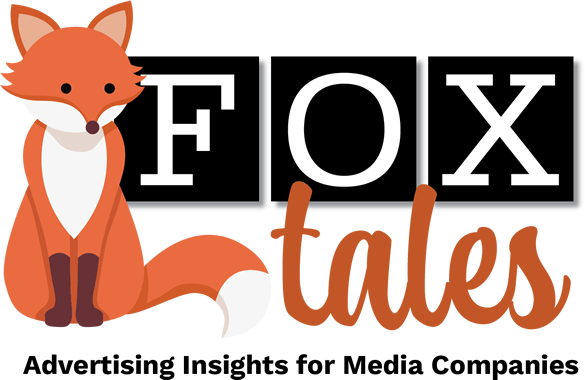The workplace can be challenging, even under the best of circumstances. There’s performance anxiety. There’s stress, induced by deadlines, and sometimes by unsupportive colleagues. At the same time, it can become a slog. The commute, the hours at a desk. The days run together.
Then factor in the events of the last four years. A pandemic, a shift to at-home work, which often blurs the lines of work time and personal time, the Great Resignation of 2021 and 2022. Then came the shift back to the office.
Organizations can end up with a workforce suffering from widespread low morale, disengagement, burnout. A 2022 Gallup poll indicated that “job unhappiness is at a staggering all-time high,” with 50% of American workers reporting they feel stressed at their jobs on a daily basis. Forty-one percent reported being worried, and still more reported being either sad or angry at work, Gallup said.
And there’s an ROI cost to all this. The same poll said that business units with engaged workers have 23% higher profit, and conversely, unengaged workers cost employers $7.8 trillion in lost productivity, equal to 11% of global GDP, the poll stated.
Clearly workplaces don’t pay enough attention to worker fulfillment, to creating meaningful connections, engagement, establishing confidence and workforce resilience.
That’s where Rachel Druckenmiller comes in. She’s a professional wellness trainer and keynote speaker whose emphasis is on “unmuting” workers—creating “opportunities for as many people as possible to feel seen, heard, and psychologically safe to share, co-create and innovate together,” as she puts it on her website.

Rachel Druckenmiller.
We saw Rachel at the recent RevUP Conference produced by Professionals for Association Revenue, and organization whose mission is right there in its name. And we thought Fox Tales readers would benefit from a more in-depth chat with her. Here’s a transcript, lightly edited for clarity and brevity.
Fox Tales: Tell us the potential impact of an organization becoming “unmuted.”
Rachel Druckenmiller: It’s helpful to first take a step back and look at what I mean by the word “unmuted.” Most people self-silence—we don’t speak up about what we think, need, want, or feel, out of fear. Fear of rejection, judgment, failure, disappointing someone, or rocking the boat. In other words, we mute ourselves, personally and professionally. When I think of what it means for an organization to be unmuted, this is what comes to mind:
- The organization is strengths-based and focuses on bringing out the best in its people by leaning into what’s working and doing more of that. They ask, “What are we doing well, and how can we double down on that?”
- The organization is open to feedback from its people and consistently emphasizes the importance of being curious—asking, “What’s working? What could we do better or differently? What’s one change we could make that would have the greatest impact? How can we be more intentional about giving our people a voice, so we make decisions with them and not for them?”
- That curiosity starts at the leadership level with leaders asking those questions of themselves, of their team members, and of the organization as a whole. Organizations that invite feedback and that create spaces where employees feel safe to share and feel heard have more engaged employees than those that do not.
- Organizations that are unmuted invite their people to open up about challenges and the support they need rather than struggling in silence out of fear of retaliation.
- Not surprisingly, unmuted organizations are supportive of their employees’ mental health and are proactive about asking their people, “How are you, really?” and “How can I best support you right now?”
- Organizations that are unmuted are committed to being psychologically safe places where team members feel included and supported to be themselves. When this happens, innovation and creativity skyrocket because people feel safe to share their thoughts and ideas without fear, which can elevate the whole organization.
- Unmuted organizations are committed to celebrating successes and prioritize appreciation and recognition, not just at an annual award ceremony but throughout the year, starting at the top with the leaders regularly recognizing people’s contributions.
Fox Tales: Can it be measured in business/revenue success?
Druckenmiller: Organizations that focus on employee strengths and ensuring employees feel seen, heard, recognized, and supported outperform those that do not. They retain their employees. They have more engaged employees. It’s easier for them to recruit new employees, and morale is higher. When retention, recruitment, engagement, and morale are elevated, financial success follows.
Fox Tales: What are the most common ways a workforce or organization needs a paradigm shift, a game-changing intervention?
Druckenmiller: To start, most organizations would benefit from recognizing that one of the first steps to any kind of meaningful change is getting curious. Curiosity is about noticing without judging. It’s about taking a look at ourselves and our organization in the mirror and asking some of the questions I posed in response to the first question. Being more consistent with checking in on employees is something organizations would benefit from doing. Managers drive 70% of the variance in employee engagement scores, so it really starts with making sure managers are supported to do their own personal and professional growth work with the support of coaches and therapists.
Most adults would benefit from seeing a therapist to process their (often) unprocessed dysfunctional thought patterns and behaviors that then leak over into the workforce and in their interactions with colleagues and clients. We’ve all seen this happen—people around us show up in ways that are reactive that then cause us to react with fear or even more reactivity.
When that happens, people are demonstrating a lack of psychological safety, and when that safety isn’t there, we can’t be productive, innovative, creative, or truly collaborative because we’re always watching our backs. If each of us were willing to “do the work” and get the support of people who can help us see what we don’t see and then take steps to change what isn’t working, we would all be better for it.
This can start with an internal process of reflection by asking ourselves how we show up when we’re our most effective and least effective selves. If we’re not sure, we could ask people we trust who know us well and are willing to be honest. Then, on a weekly basis, we could ask ourselves and our team members to share something we’re proud of, something we learned, something that challenged us, and something we’re looking forward to. When we open up the lines of communication to connect in meaningful ways, that helps us build trust and psychological safety.
Fox Tales: What are the symptoms of a muted, underperforming workforce?
Druckenmiller: People not sharing ideas due to fear of rejection, failure or retaliation. Lack of trust. High rates of burnout, anxiety, and depression. Low morale and engagement. Challenges with retaining and recruiting talent. Tolerance of toxic team members, who make their colleagues feel psychologically unsafe. Low performance and productivity. People who are “quietly quitting”—staying at the company but doing the bare minimum. A muted, underperforming workforce very likely doesn’t feel seen, heard, supported, or recognized, and they respond by disengaging. People silently struggling with frustrations, harassment, or being marginalized in some way rather than feeling safe and supported to speak up.
Fox Tales: What are the key attributes of a well-functioning organization?
Druckenmiller: People far wiser than I have written countless books on this topic. Some of my favorite authors to read on this topic are Patrick Lencioni, Adam Grant, and Simon Sinek. Having said that, there are some basic attributes I can share. A well-functioning organization is clear about who it is helping and why that matters—it is clear on why this is relevant, and each employee has clarity about their specific contributions to the mission and vision. This starts with getting curious with your employees and inviting them to share stories of when they’ve felt like they were making a contribution.
An organization that prioritizes learning and growth is often well-functioning. When the leaders at the top of an organization have the humility to ask questions, seek and act on feedback, experiment, and take steps to support the growth and development of their people, the organization tends to thrive.
In well-functioning organizations, employees feel seen, heard, recognized, valued, and appreciated, which makes them feel more engaged. Diversity of thought, experience, and representation are important to the success and ongoing impact of an organization. Being intentional about bringing in voices, perspectives, and insights across the organization throughout the year and not just from the same people over and over again, is important. You could do that using some of the questions shared previously.
When organizations focus on relevance, recognition, growth and learning, and inclusion, they are more likely to be higher-performing and experience positive outcomes like increased retention, recruitment, engagement, and morale.
Fox Tales: Briefly take us through your process, from analysis/diagnosis, to prescription, to results.
Druckenmiller: By nature, I’m not a prescriptive person. I don’t believe there is one way everyone should do something. But what I do believe in is the power of curiosity, so that’s where I always start—asking questions, getting curious, starting with ourselves.
I invite people to take three steps that can look very different from person to person and from one situation to the next.
- Reflect within yourself and with your team members using the question shared throughout this article. Curiosity can catalyze clarity.
- Reframe your perspective. Ask yourself what kind of person you want to be moving forward and be clear about what is working (do more of that) and what isn’t (get support to stop doing those things) to support that intention.
- Recalibrate your actions. Take intentional steps to be that kind of person, leader, team member you said you want to be.
For more insights on how to be unmuted, personally and professionally, feel free to follow me on LinkedIn, my website, my biweekly UnmuteYourself livestream show, and on my podcast playlist.
